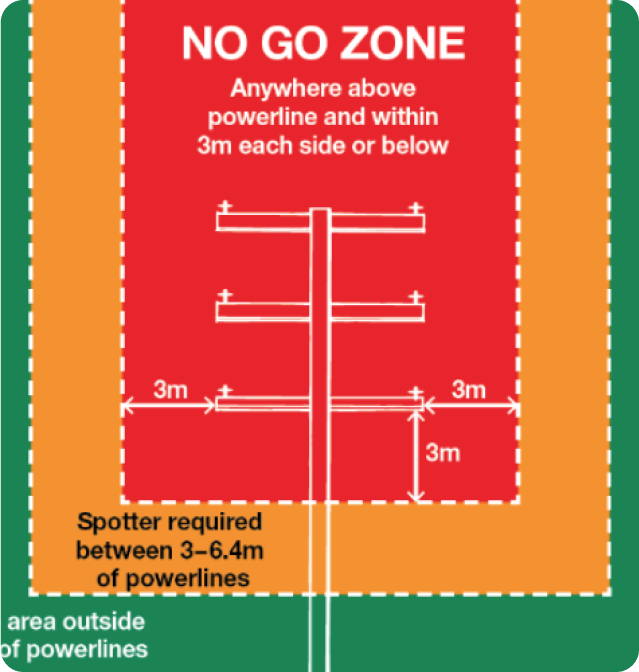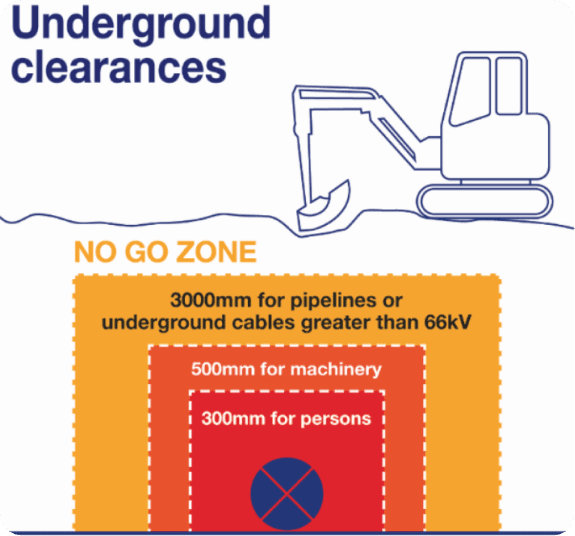Working around powerlines
Don’t put your life on the line, when planning any job, big or small always check the location of above ground powerlines to ensure you are able to work safely. You don’t have to make contact with a powerline for it to be fatal. Electricity can jump if equipment or machinery gets too close to powerlines.
Work safely
To help you plan to work safely near above ground electricity, use the look up and live map. It provides an interactive map to identify the powerlines, their voltages and who owns them. With most of Australia’s above ground electricity network now active on the map, the tool is free and available on web, android and apple phone apps.
The tool combines several important safety features in one handy location, including:
- Safety guidelines and advice, including powerline exclusion zones
- Options for planning or performing work e.g. powerline visual indicators
- Information on de-energisation or relocation of powerlines
- High load forms
- Before You Dig Australia enquiry details
Access the Look Up and Live Tool
The Look Up and Live map tool is accessible online, or via the Google Play and App stores.
Working near Powerlines
If you are working near overhead powerlines, always implement appropriate risk controls. Ideally, you should contact the asset owner to see if there is the option to de-energise or relocate the lines or install powerline visual indicators e.g. rota markers. When this is not possible, always stick to NO GO ZONE rules and implement the following:
- Placement of physical barriers to prevent encroachment.
- Appoint a safety observer.
- Delineate and set up a safety observer area.
Overhead
It is important you know the height and voltage of the overhead powerlines in your work area, as well as the height of your machinery. There are minimum safe approach distances when workers and their equipment are operating near powerlines.
Minimum safe distances, or no-go zones, for overhead powerlines can be obtained from state-based asset owners and is often linked to specific Codes of Practice. The Look Up and Live map tool provides interactive links from asset owners, allowing users to click on powerlines for more details where you can obtain no-go zones information and safe working distances.

Underground
For anyone undertaking digging or excavation work, activity involving heavy machinery or compacting equipment near underground services, you need to follow safe work practices to ensure your safety and the safety of those around you.
This includes adhering to no-go zones for people and machinery when working around certain assets.
Requirements for adhering to underground no-go zones can be found in the member responses provided by asset owners after lodging your free BYDA enquiry. If there is no specific information relating to these requirements, you should always contact the asset owners directly.



